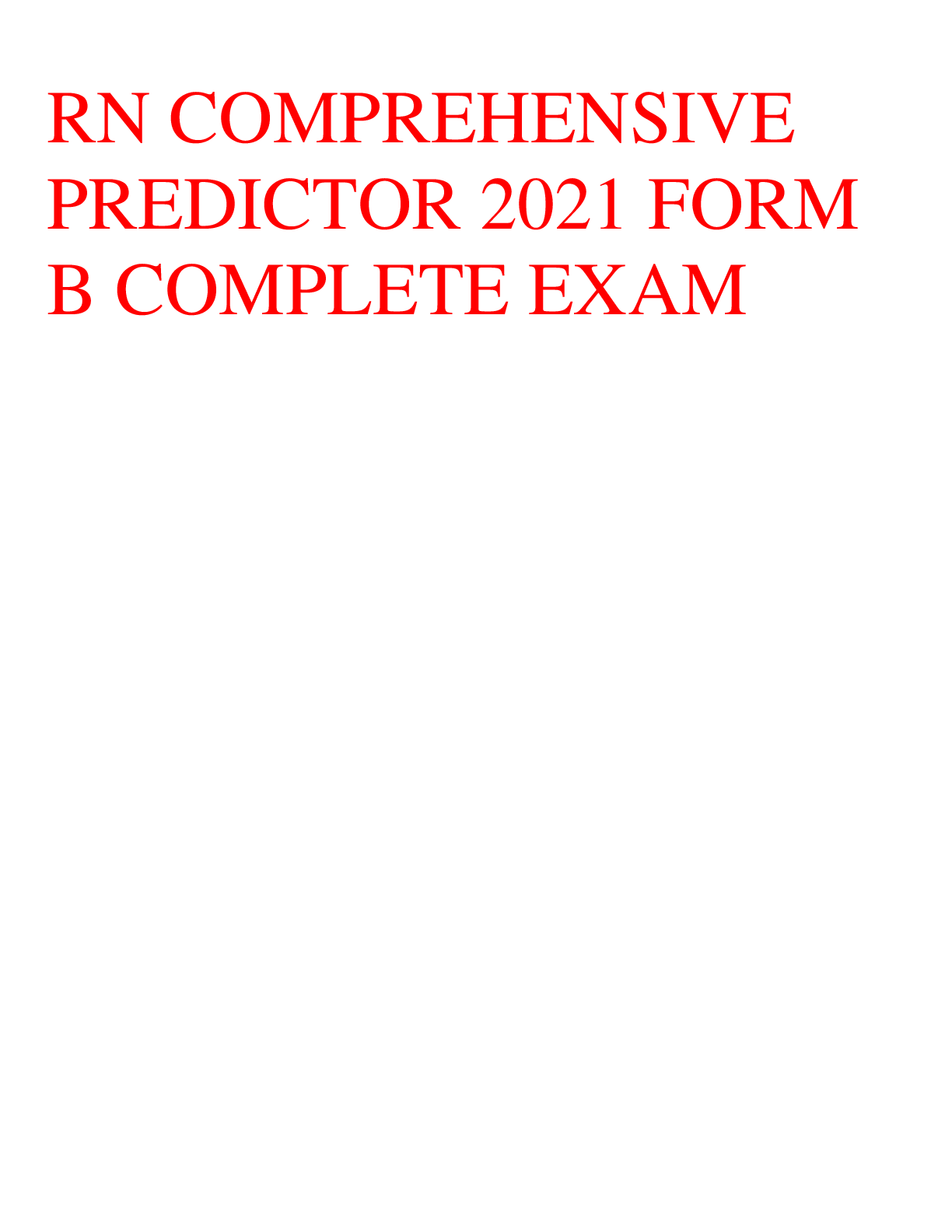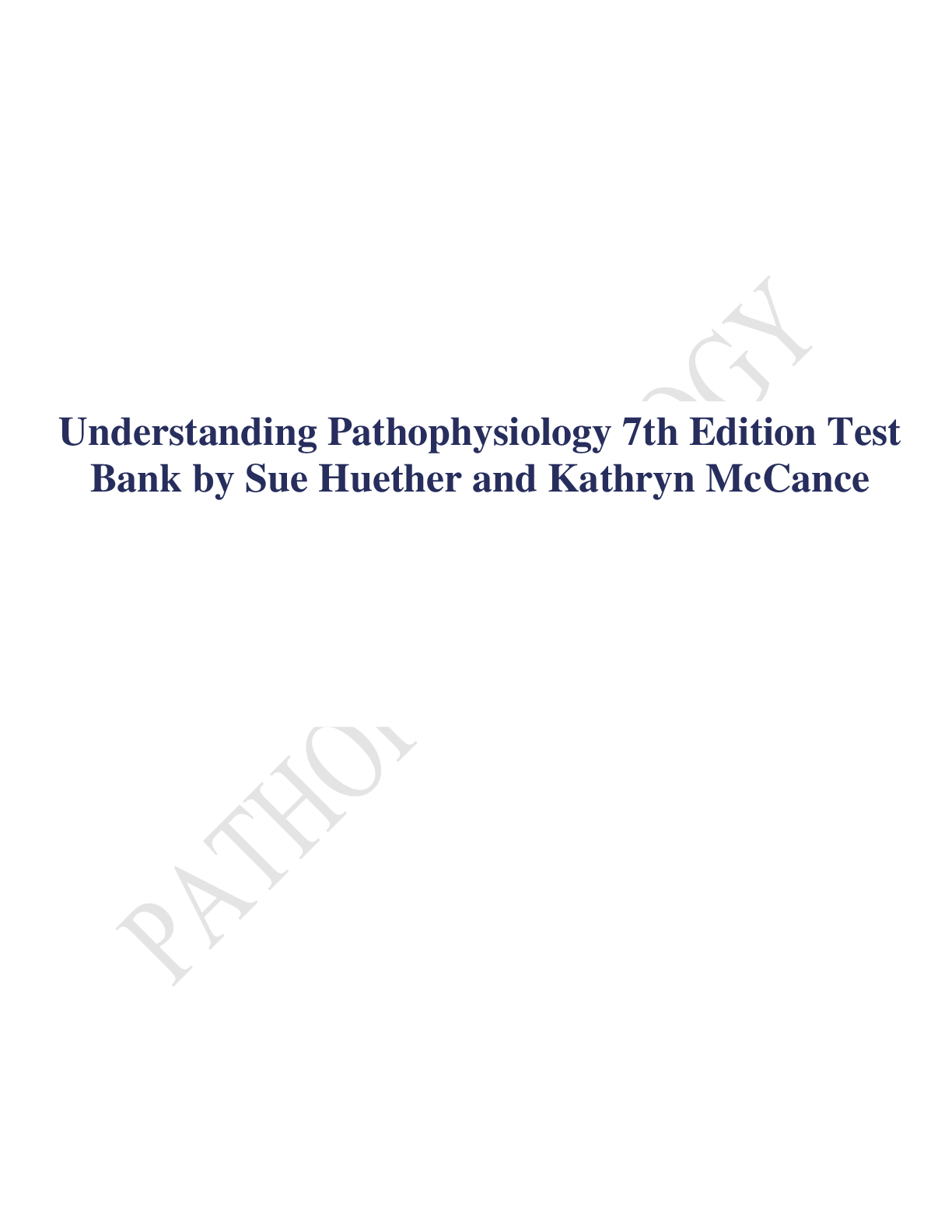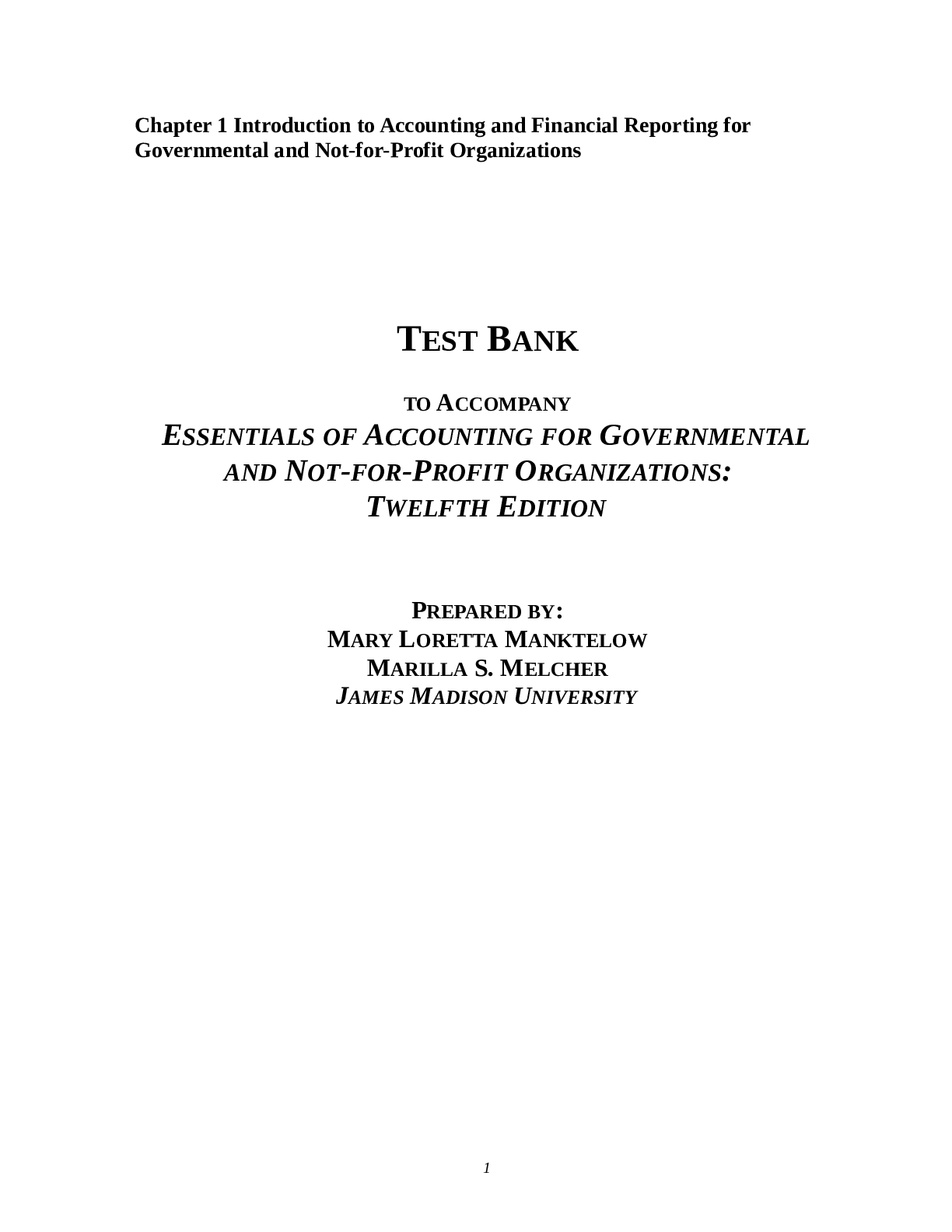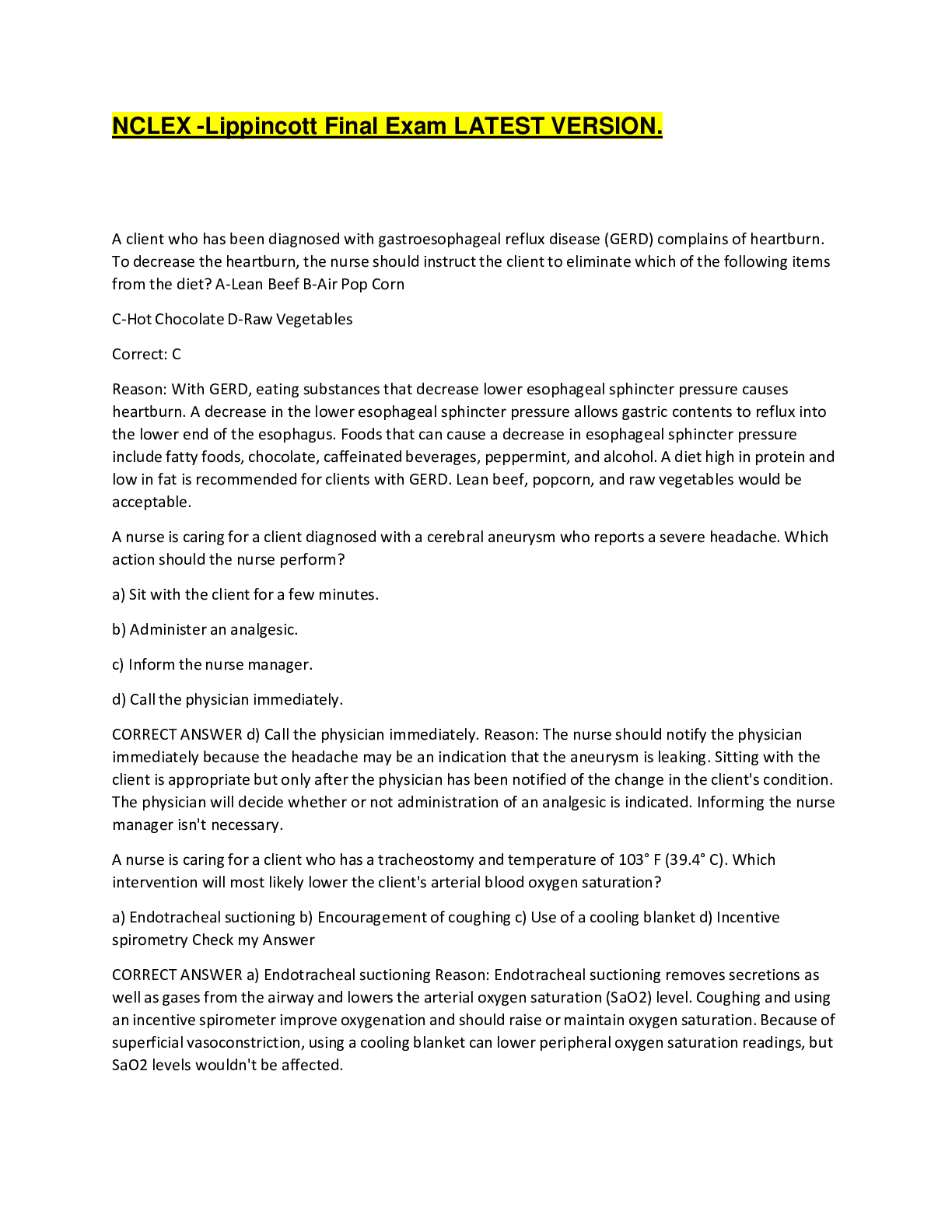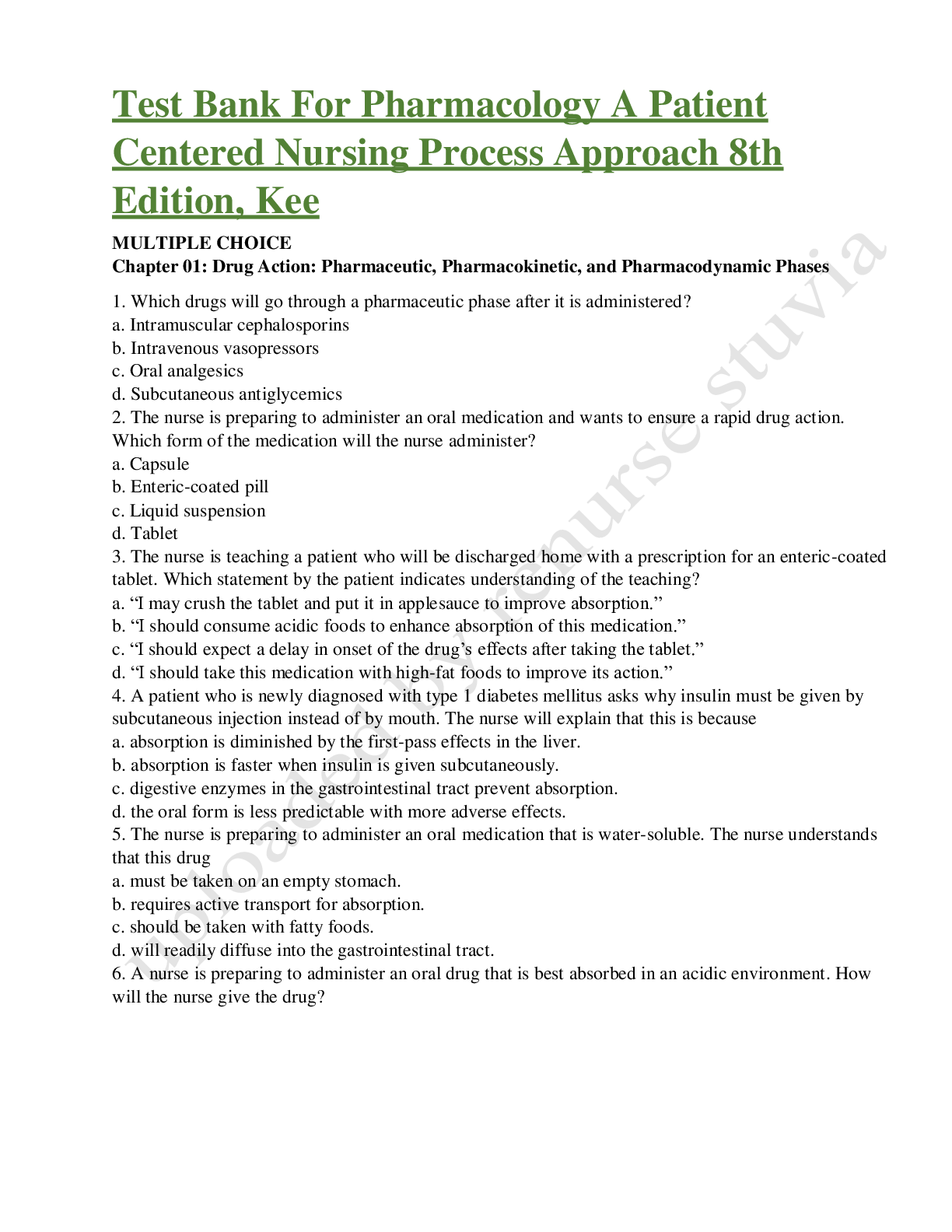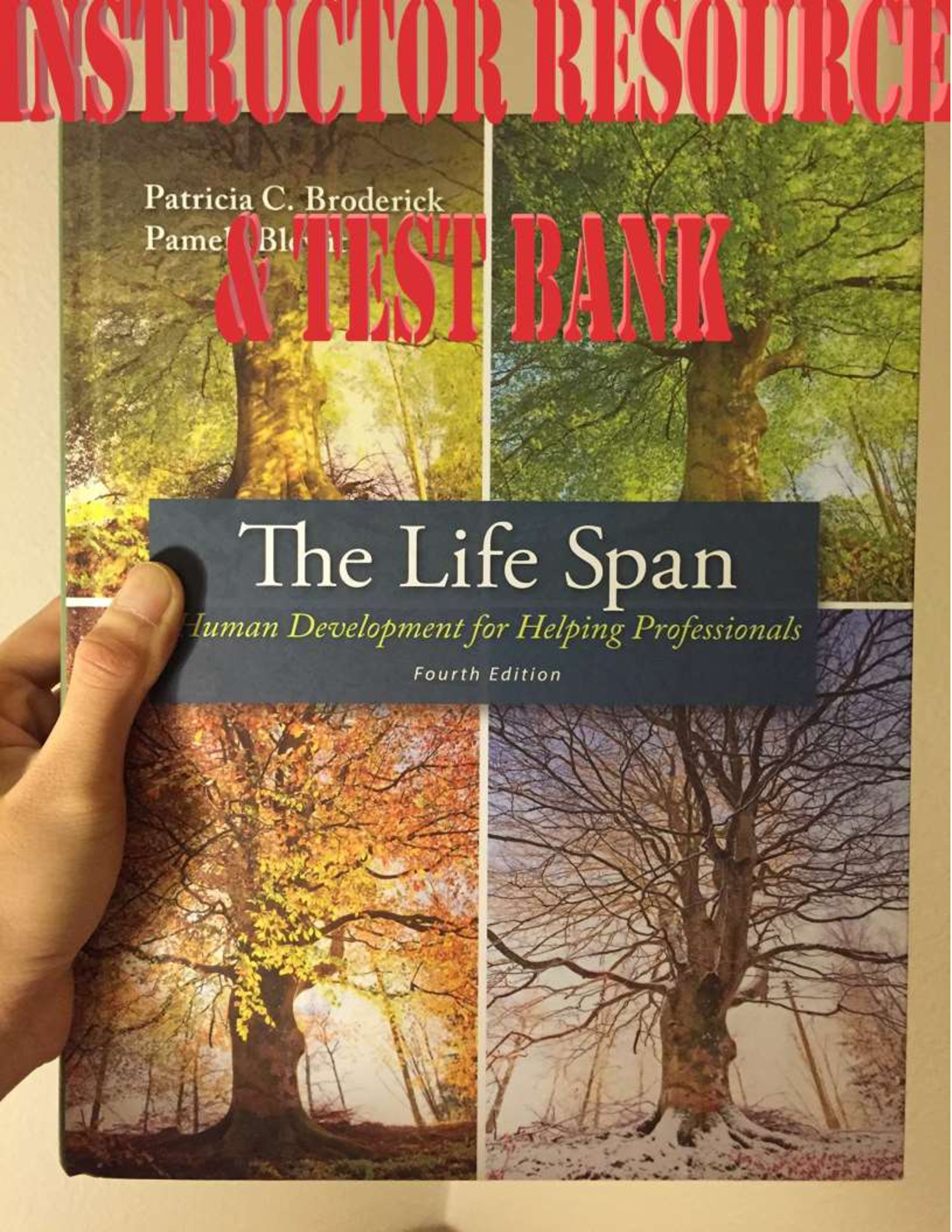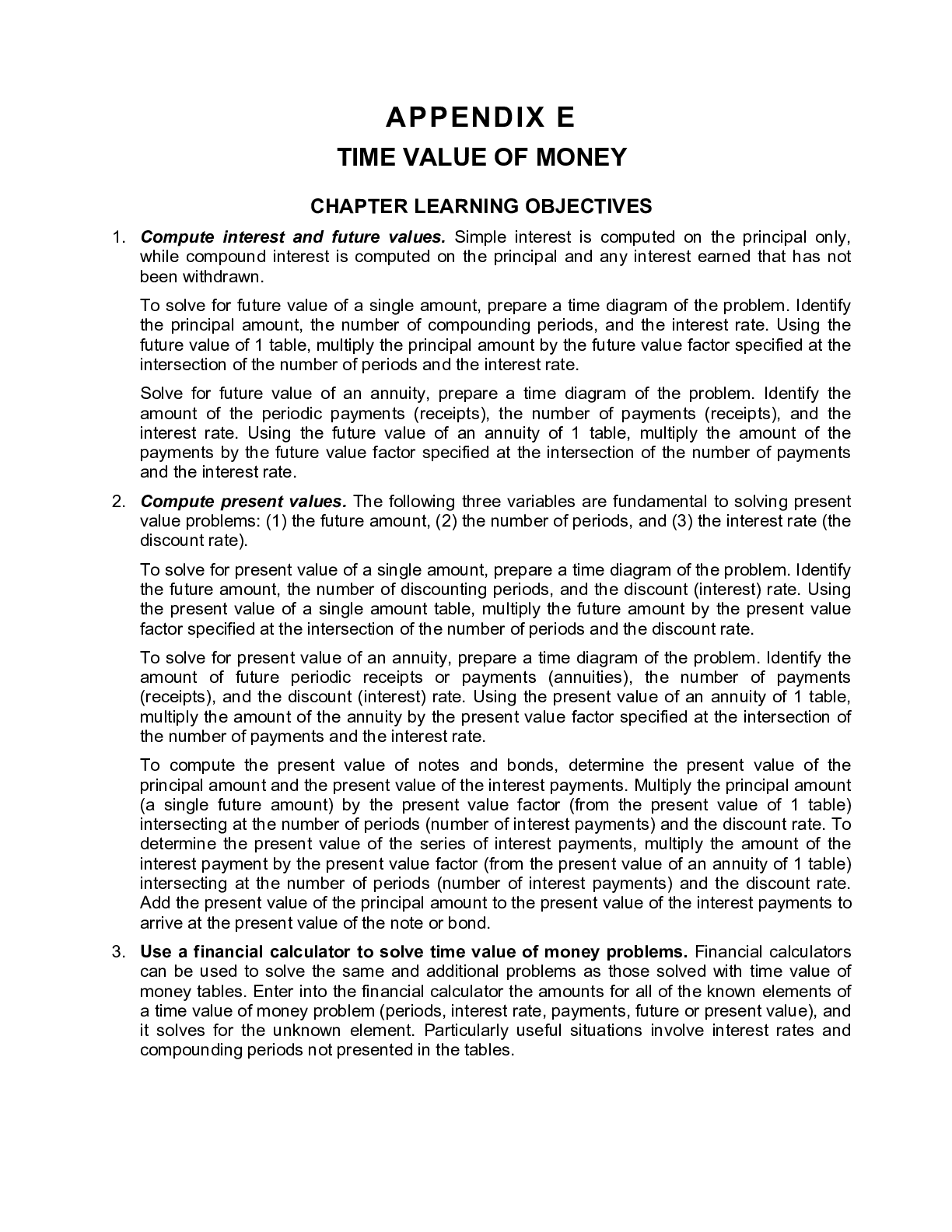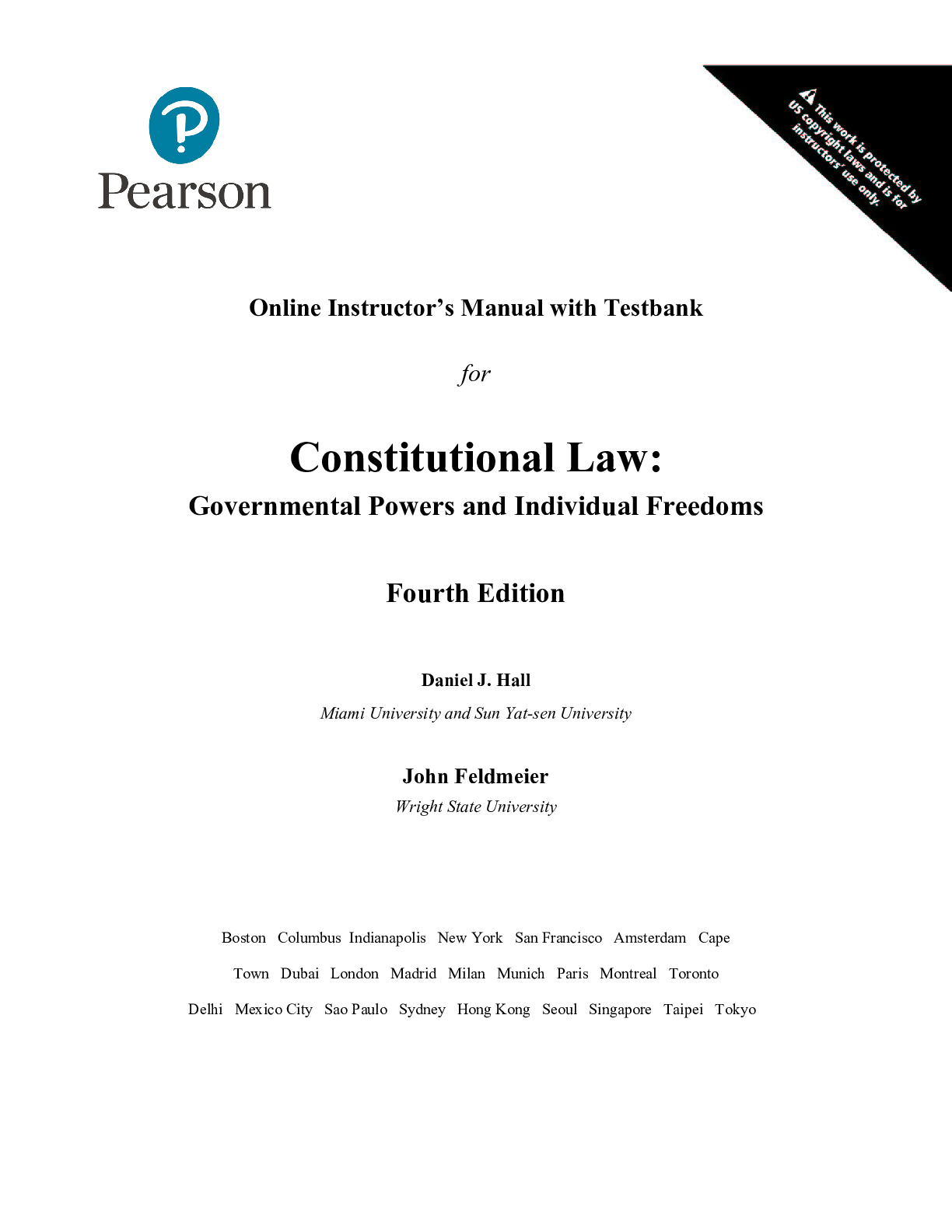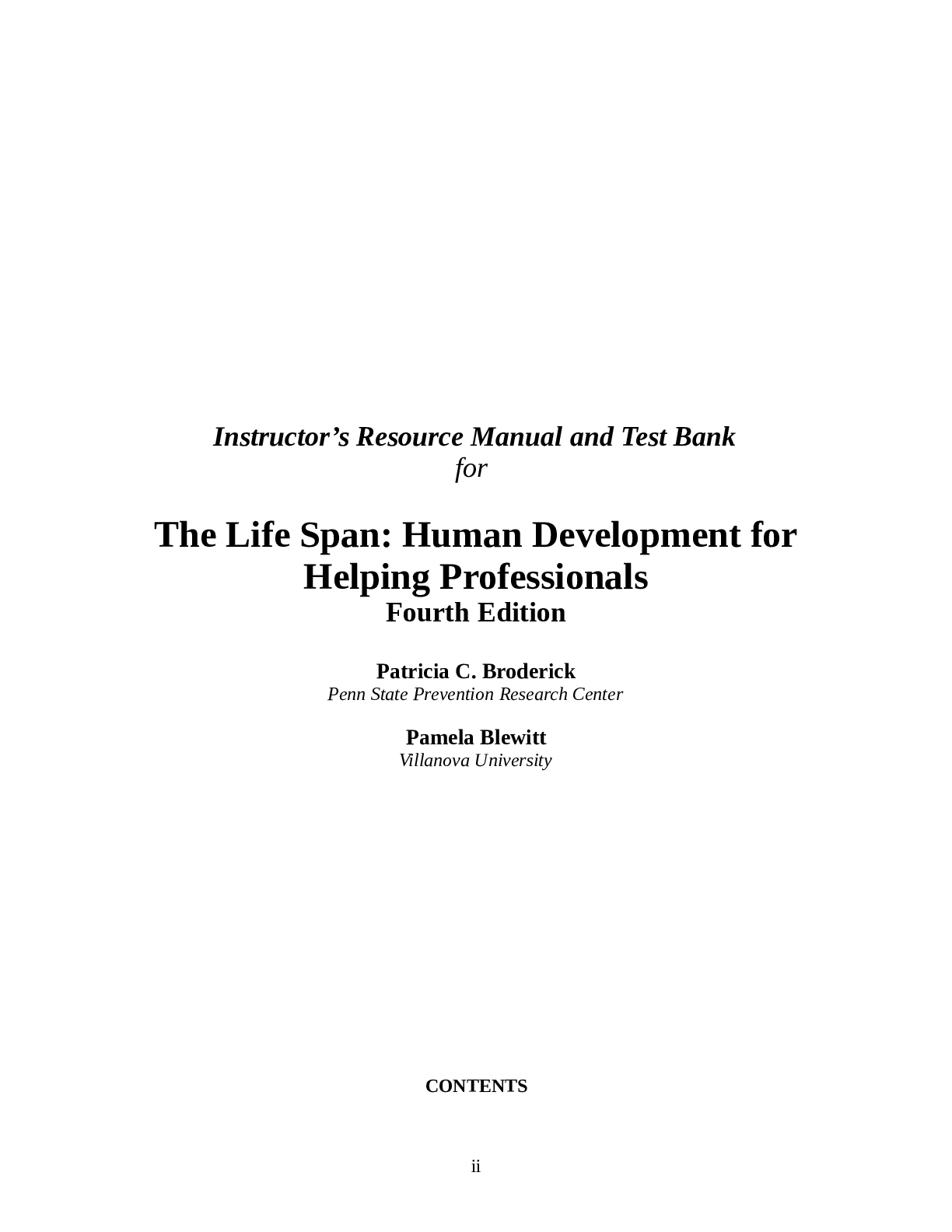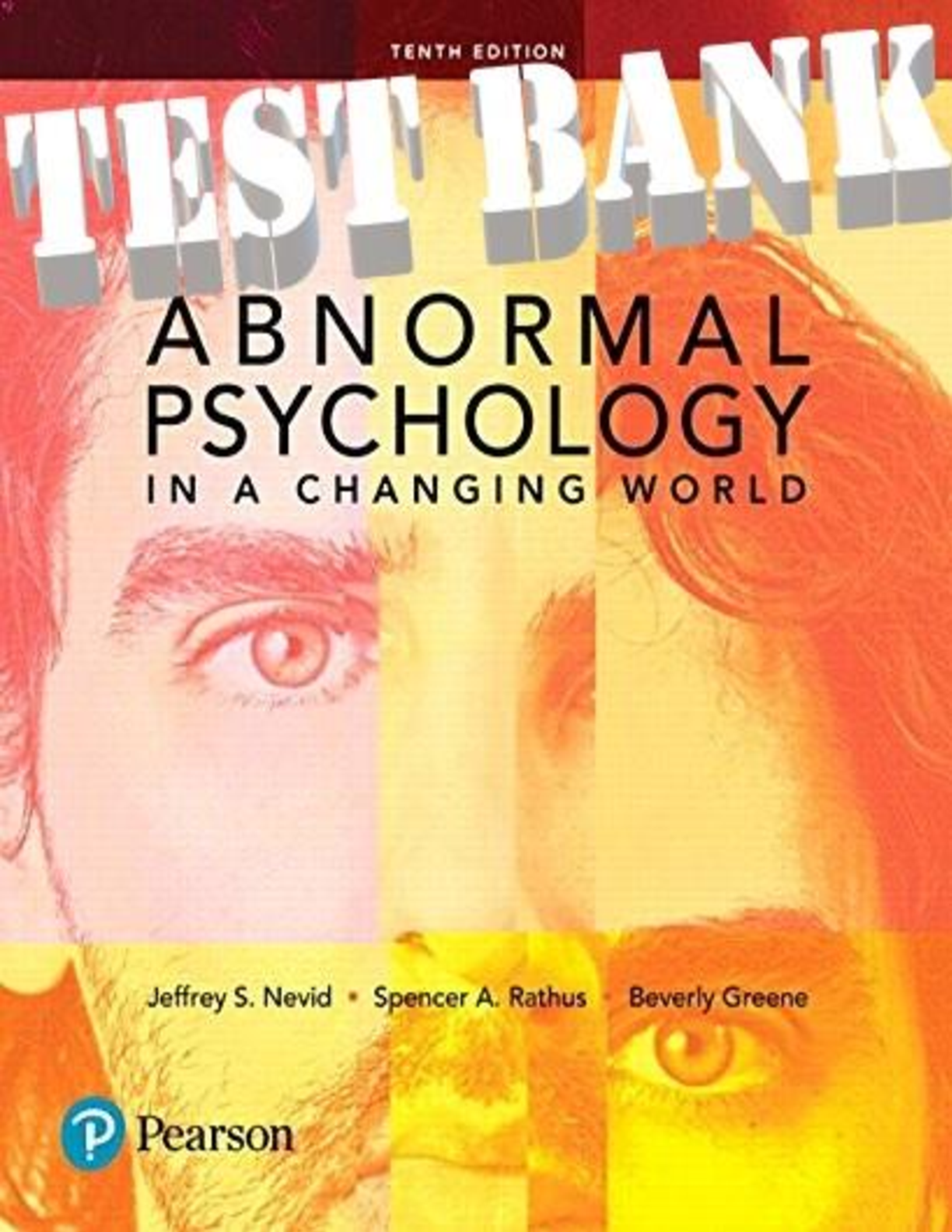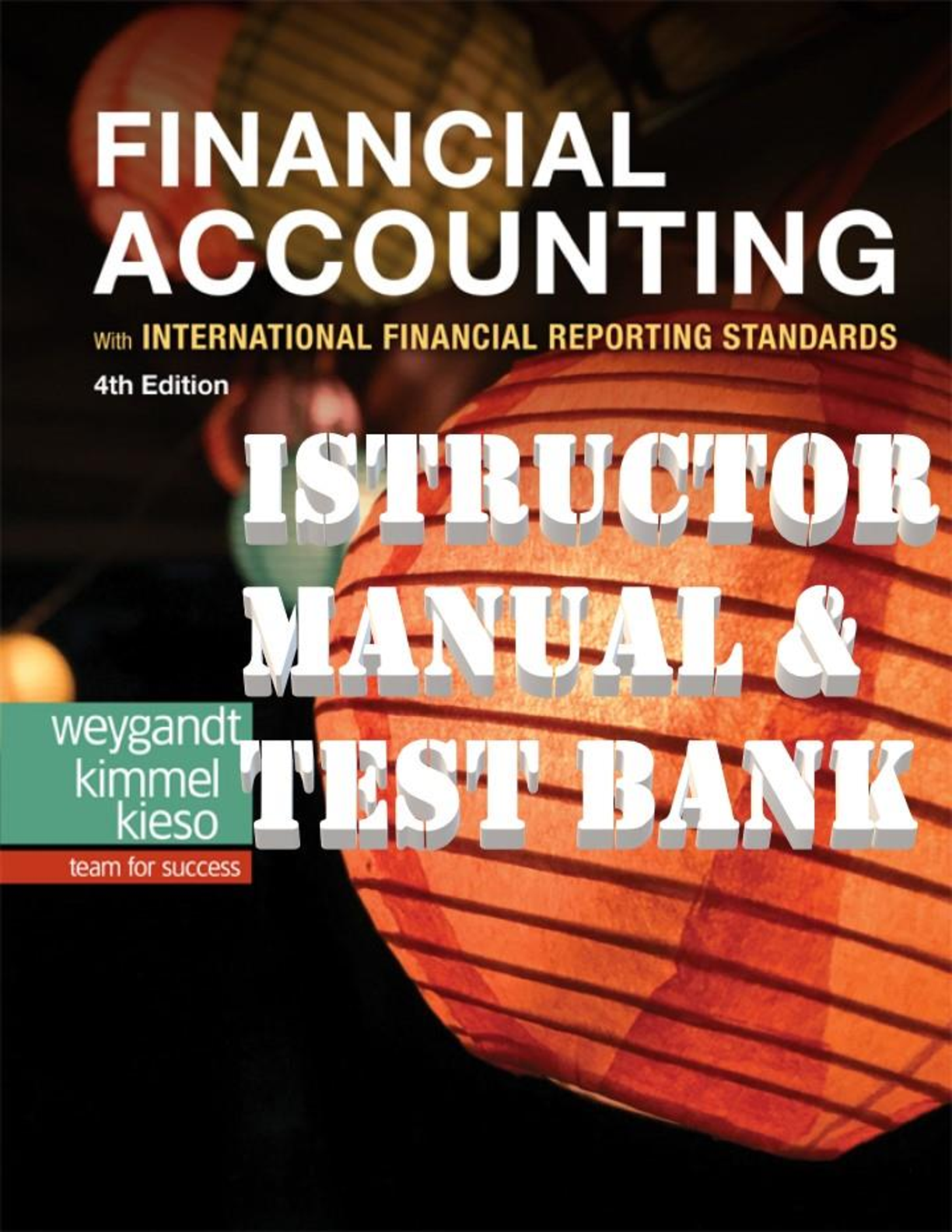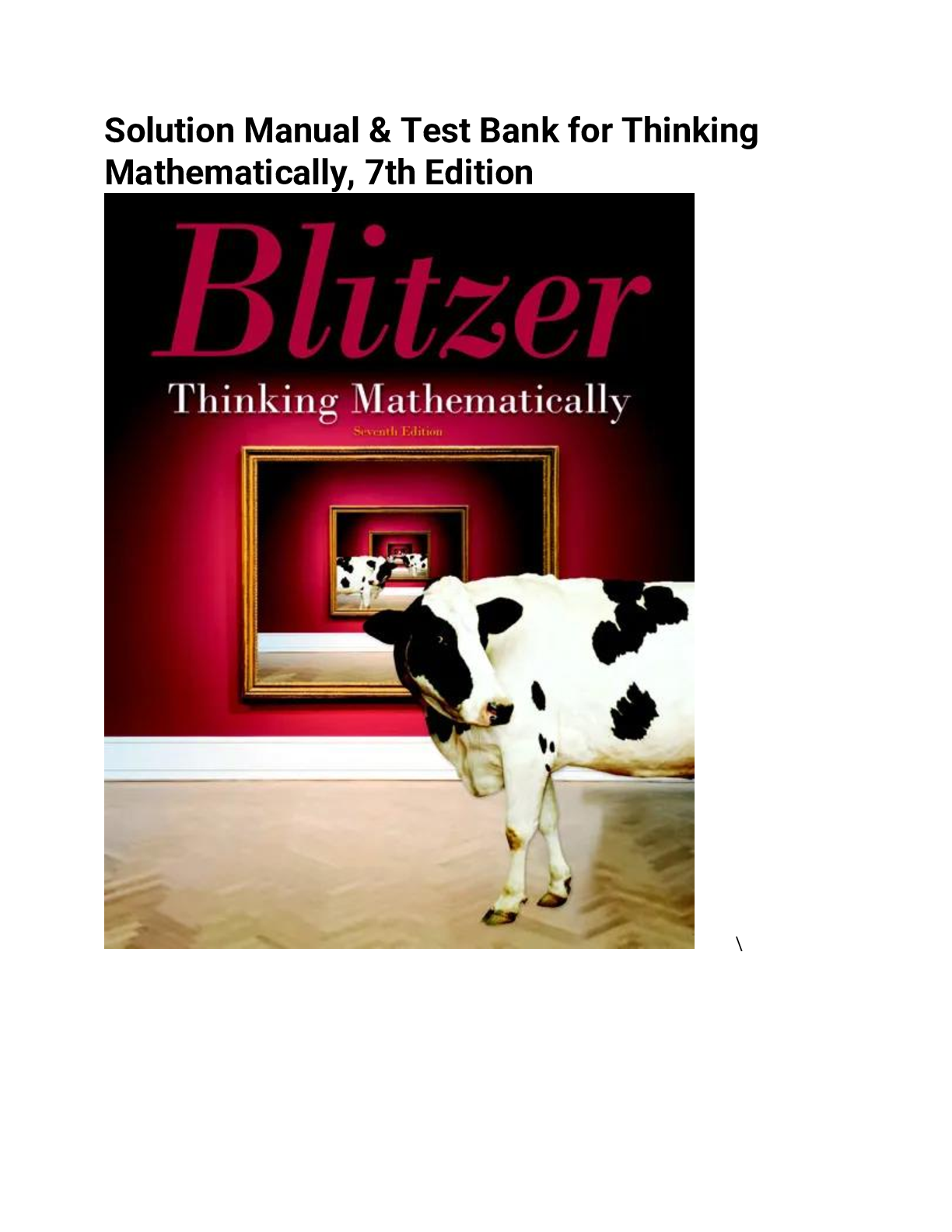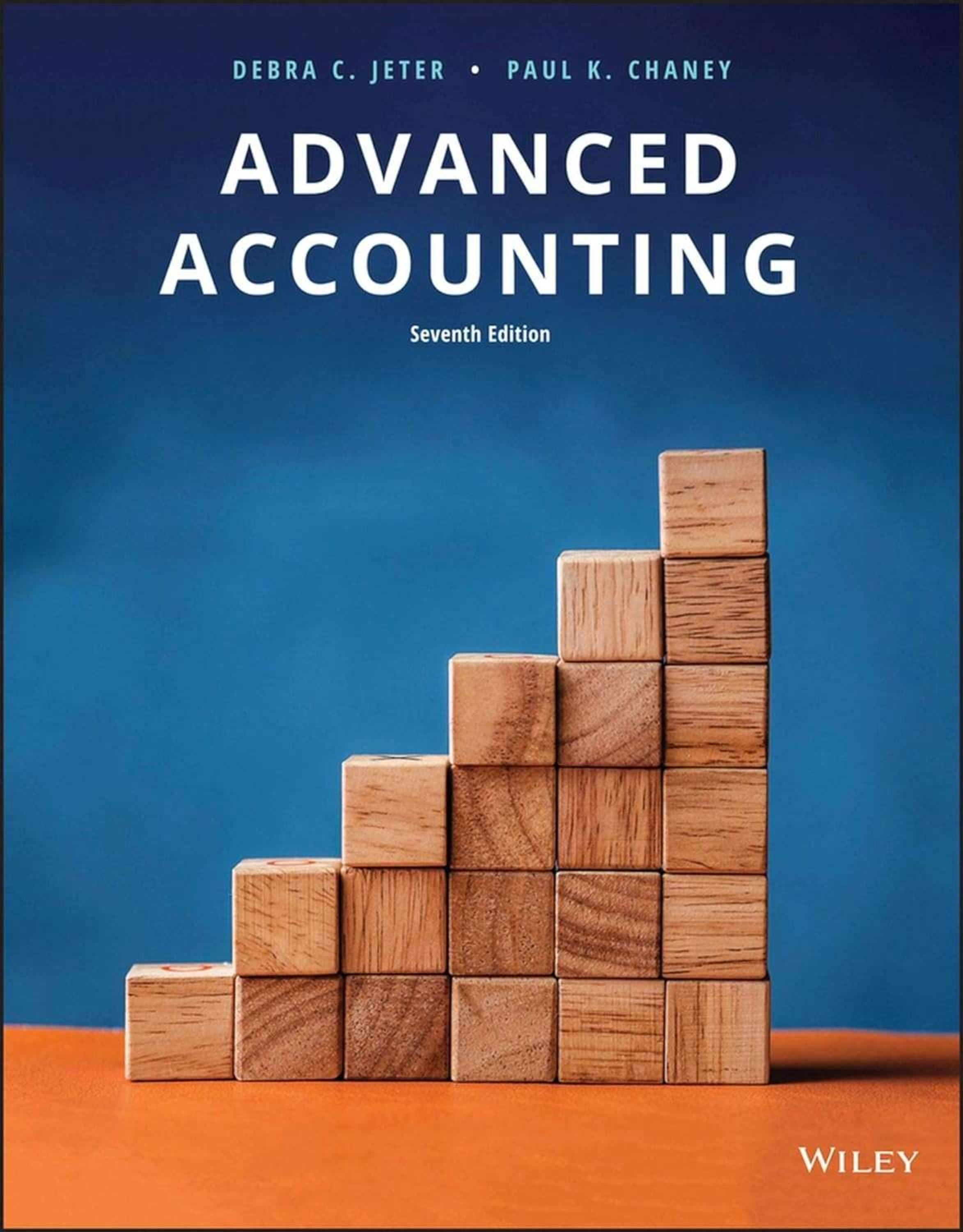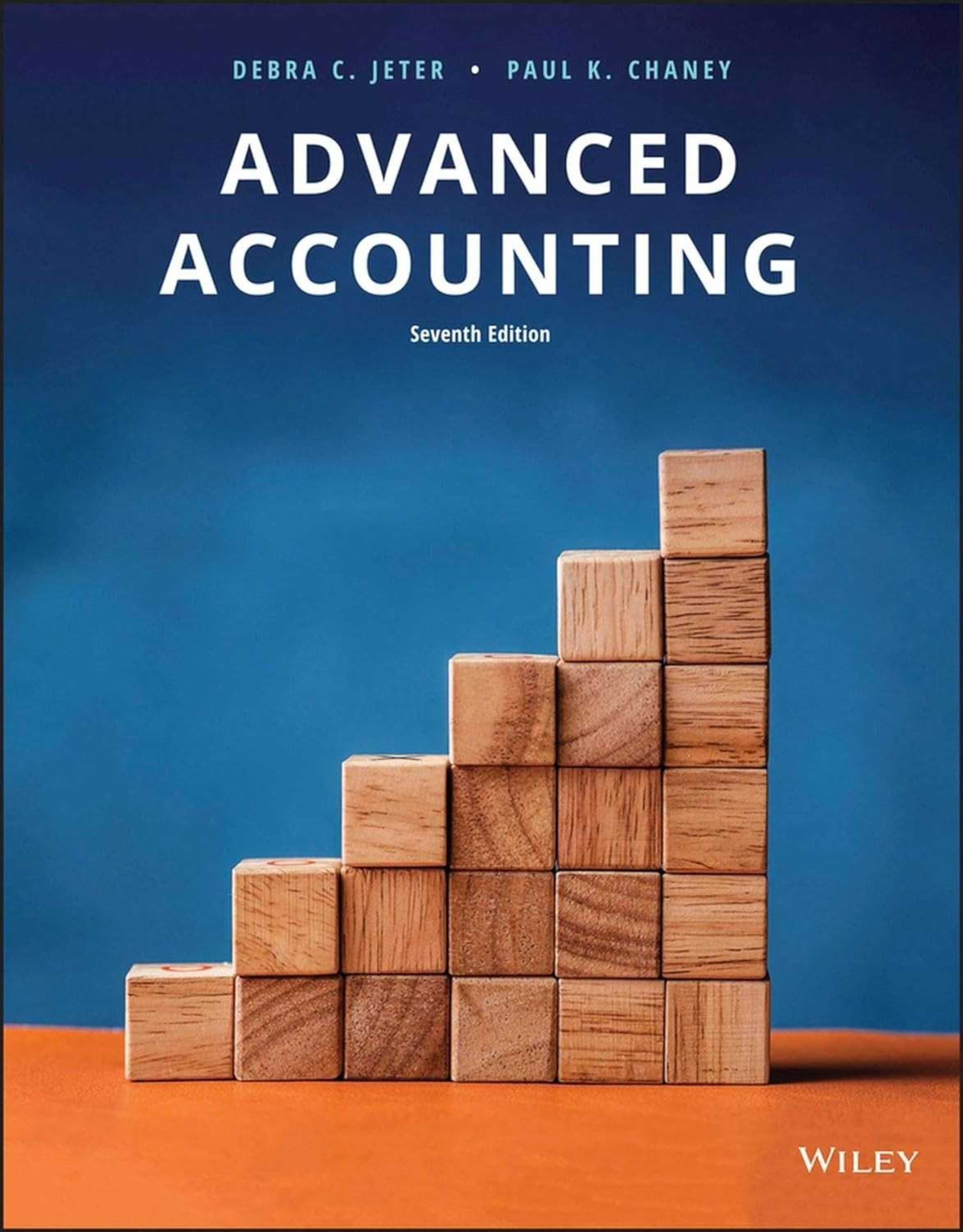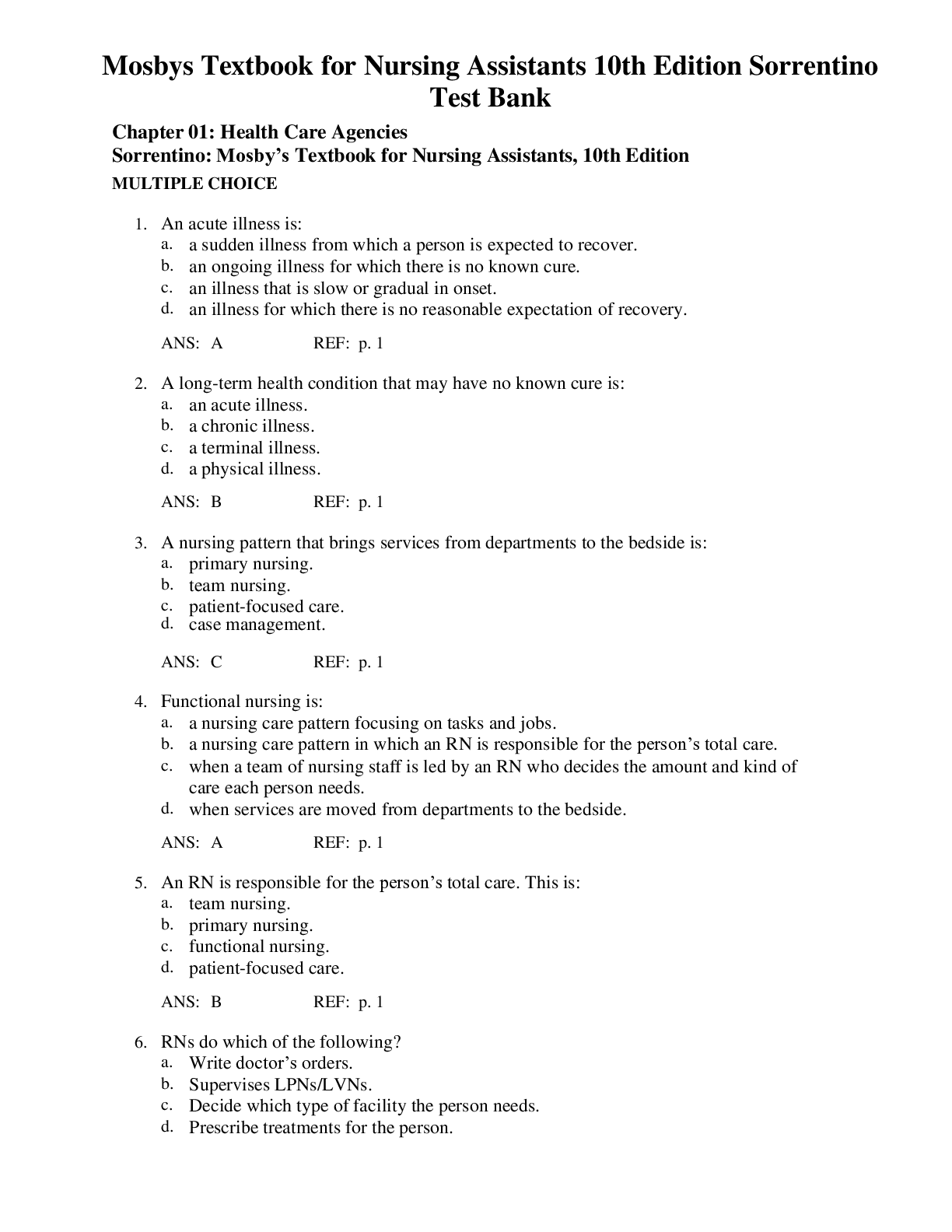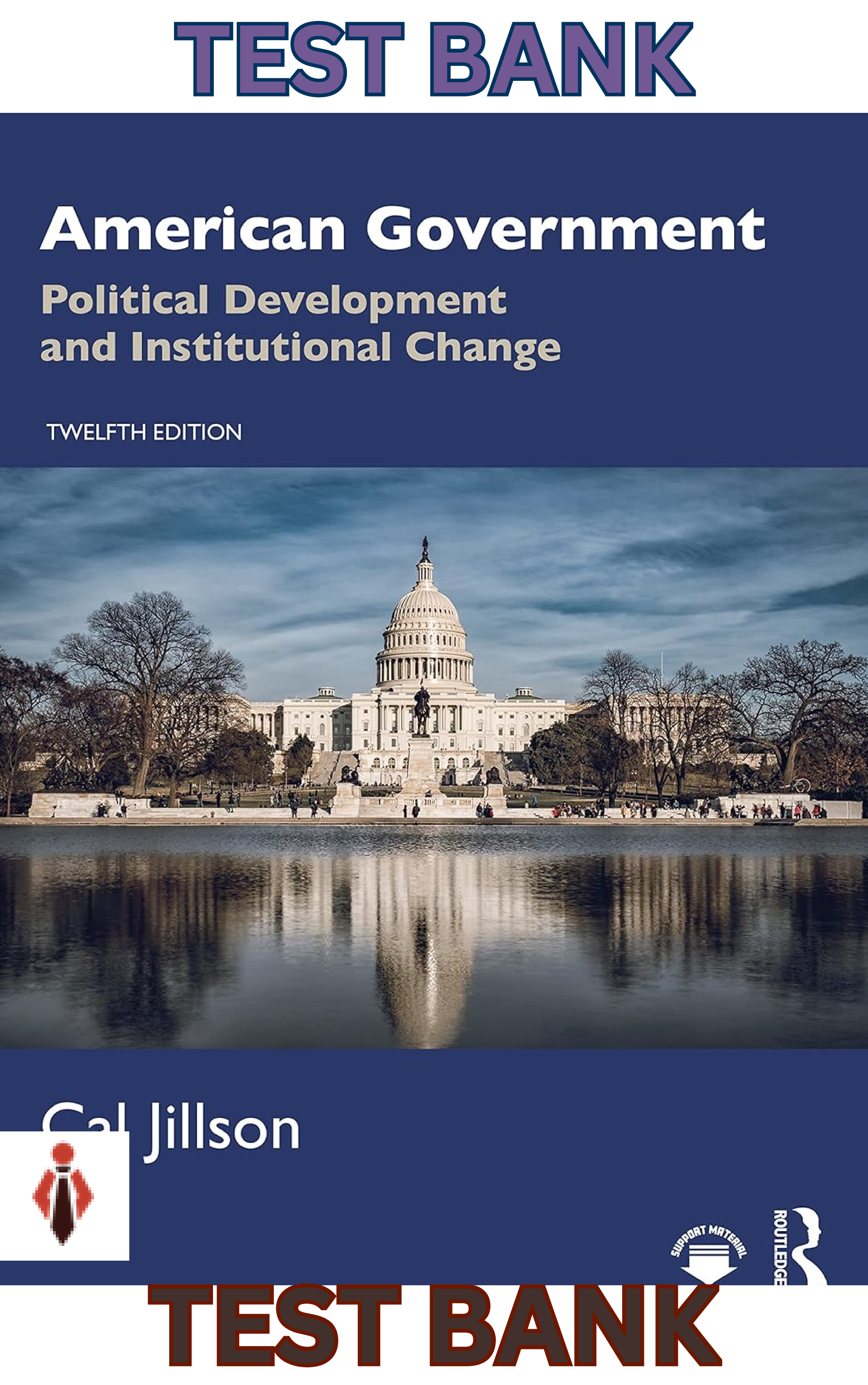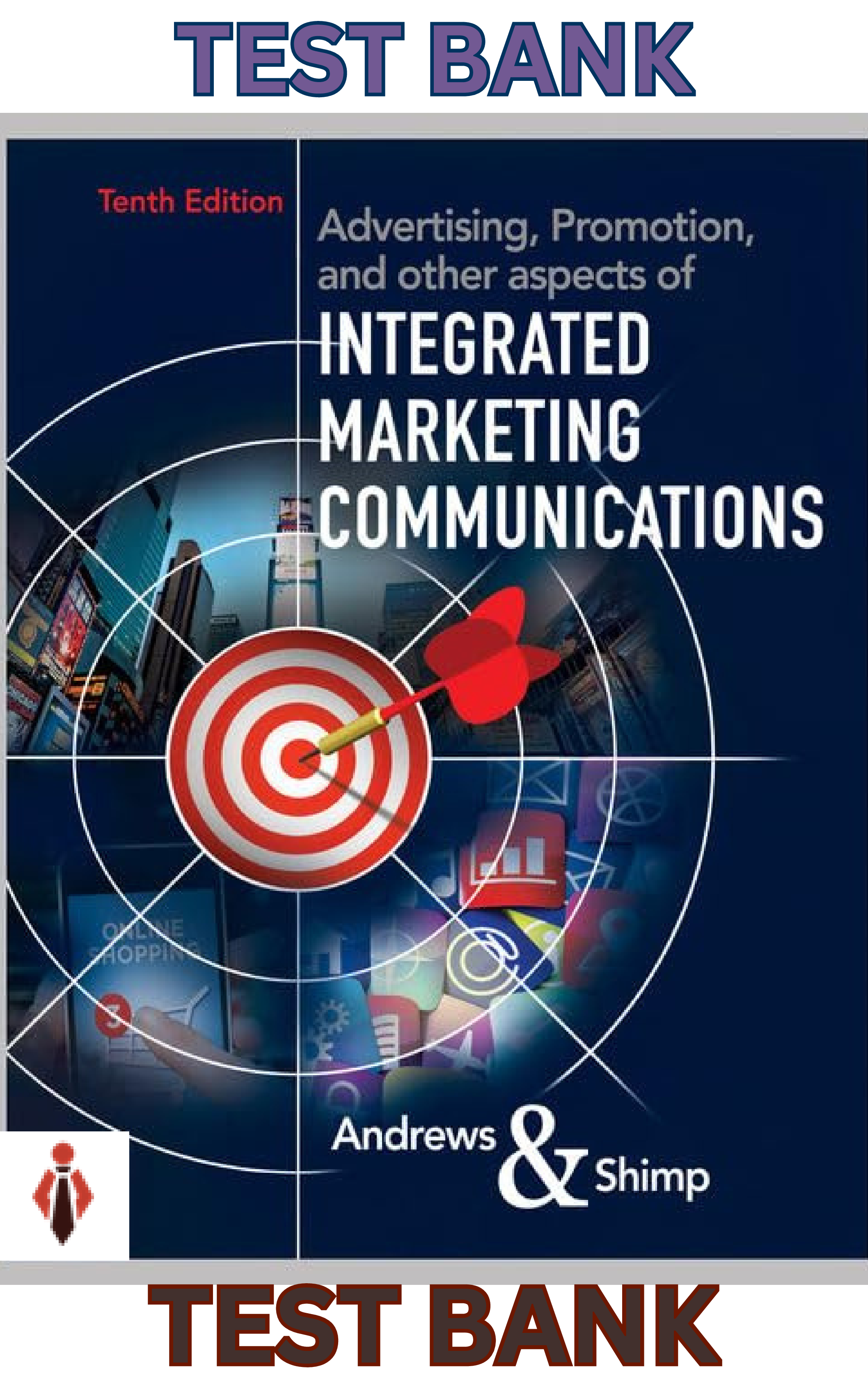Human Anatomy & Test Bank well elaborated questions and answers
Document Content and Description Below
Human Anatomy & Test Bank well elaborated questions and answers horacic cavity. Section: 1.6 Learning Outcome: 1.12 Global LO: G3 HAPS LO: HAPS1 Bloom’s Level: 1 Knowledge 2) Cranial cavity.... Section: 1.6 Learning Outcome: 1.12 Global LO: G3 HAPS LO: HAPS1 Bloom’s Level: 1 Knowledge 3) Abdominal cavity. Section: 1.6 Learning Outcome: 1.12 Global LO: G3 HAPS LO: HAPS1 Bloom’s Level: 1 Knowledge 4) Vertebral cavity. Section: 1.6 Learning Outcome: 1.12 Global LO: G3 HAPS LO: HAPS1 Bloom’s Level: 1 Knowledge Answers: 1) C 2) B 3) A 4) D Figure 1.2 Using Figure 1.2, match the following descriptions to the most appropriate letter on the diagram: A) E B) A C) B D) D E) C 5) Information about body temperature is sent through afferent pathways to the brain. Section: 1.4 Learning Outcome: 1.7, 1.8 Global LO: G2, G3 HAPS LO: HAPS2, HAPS3 Bloom’s Level: 3 Application 6) Free nerve endings in the skin detect changes in skin temperature (getting colder). Section: 1.4 Learning Outcome: 1.7, 1.8 Global LO: G2, G3 HAPS LO: HAPS2, HAPS3 Bloom’s Level: 3 Application 7) Appropriate response information is sent through efferent pathways. Section: 1.4 Learning Outcome: 1.7, 1.8 Global LO: G2, G3 HAPS LO: HAPS2, HAPS3 Bloom’s Level: 3 Application 8) A change in the temperature of the external environment (getting colder). Section: 1.4 Learning Outcome: 1.7, 1.8 Global LO: G2, G3 HAPS LO: HAPS2, HAPS3 Bloom’s Level: 3 Application 9) Skeletal muscles respond with shivering reflex which provides heat to return the body’s temperature to a homeostatic balance or “ideal” value. Section: 1.4 Learning Outcome: 1.7, 1.8 Global LO: G2, G3 HAPS LO: HAPS2, HAPS3 Bloom’s Level: 3 Application Answers: 5) E 6) C 7) D 8) B 9) A Match the following systems to their functions: A) Muscular B) Skeletal C) Integumentary D) Nervous 10) Provides the force to move bones about their joints. Section: 1.2 Learning Outcome: 1.4 Global LO: G2, G7 HAPS LO: HAPS2, HAPS5 Bloom’s Level: 2 Comprehension 11) Responds to environmental changes by transmitting electrical impulses. Section: 1.2 Learning Outcome: 1.4 Global LO: G2, G7 HAPS LO: HAPS2, HAPS5 Bloom’s Level: 2 Comprehension 12) Provides a ridged framework to support the body and stores minerals. Section: 1.2 Learning Outcome: 1.4 Global LO: G2, G7 HAPS LO: HAPS2, HAPS5 Bloom’s Level: 2 Comprehension 13) Prevents water loss, entry of germs into the body and synthesizes vitamin D. Section: 1.2 Learning Outcome: 1.4 Global LO: G2, G7 HAPS LO: HAPS2, HAPS5 Bloom’s Level: 2 Comprehension Answers: 10) A 11) D 12) B 13) C Match the following systems to their functions: A) Lymphatic B) Endocrine C) Immune D) Cardiovascular 14) Controls the body with chemical molecules called hormones. Section: 1.2 Learning Outcome: 1.4 Global LO: G2, G7 HAPS LO: HAPS2, HAPS5 Bloom’s Level: 2 Comprehension 15) Delivers oxygen and nutrients to the tissues. Section: 1.2 Learning Outcome: 1.4 Global LO: G2, G7 HAPS LO: HAPS2, HAPS5 Bloom’s Level: 2 Comprehension 16) Produces antibodies that attach to foreign substances. Section: 1.2 Learning Outcome: 1.4 Global LO: G2, G7 HAPS LO: HAPS2, HAPS5 Bloom’s Level: 2 Comprehension 17) Removes and filters excess fluid from tissues. Section: 1.2 Learning Outcome: 1.4 Global LO: G2, G7 HAPS LO: HAPS2, HAPS5 Bloom’s Level: 2 Comprehension Answers: 14) B 15) D 16) C 17) A Match the following examples of feedback mechanisms: A) Negative feedback B) Positive feedback 18) Used for changes in blood glucose levels. Section: 1.4 Learning Outcome: 1.7, 1.8 Global LO: G2, G3 HAPS LO: HAPS2, HAPS3 Bloom’s Level: 2 Comprehension 19) Used for changes in blood pressure. Section: 1.4 Learning Outcome: 1.7, 1.8 Global LO: G2, G3 HAPS LO: HAPS2, HAPS3 Bloom’s Level: 2 Comprehension 20) Used for blood clotting. Section: 1.4 Learning Outcome: 1.7, 1.8 Global LO: G2, G3 HAPS LO: HAPS2, HAPS3 Bloom’s Level: 2 Comprehension 21) Used for childbirth. Section: 1.4 Learning Outcome: 1.7, 1.8 Global LO: G2, G3 HAPS LO: HAPS2, HAPS3 Bloom’s Level: 2 Comprehension Answers: 18) A 19) A 20) B 21) B Match the following systems and organs: A) Respiratory B) Endocrine C) Digestive D) Urinary E) Cardiovascular 22) Arteries, veins, heart. Section: 1.2 Learning Outcome: 1.4 Global LO: G2, G7 HAPS LO: HAPS2, HAPS5 Bloom’s Level: 2 Comprehension 23) Trachea, bronchi, alveoli. Section: 1.2 Learning Outcome: 1.4 Global LO: G2, G7 HAPS LO: HAPS2, HAPS5 Bloom’s Level: 2 Comprehension 24) Adrenal glands, pancreas, pituitary. Section: 1.2 Learning Outcome: 1.4 Global LO: G2, G7 HAPS LO: HAPS2, HAPS5 Bloom’s Level: 2 Comprehension 25) Esophagus, large intestine, rectum. Section: 1.2 Learning Outcome: 1.4 Global LO: G2, G7 HAPS LO: HAPS2, HAPS5 Bloom’s Level: 2 Comprehension 26) Kidneys, bladder, ureters. Section: 1.2 Learning Outcome: 1.4 Global LO: G2, G7 HAPS LO: HAPS2, HAPS5 Bloom’s Level: 2 Comprehension Answers: 22) E 23) A 24) B 25) C 26) D Match the following cavities and organs: A) Abdominopelvic B) Cranial C) Thoracic 27) Stomach. Section: 1.6 Learning Outcome: 1.12 Global LO: G7 HAPS LO: HAPS1 Bloom’s Level: 1 Knowledge 28) Heart. Section: 1.6 Learning Outcome: 1.12 Global LO: G7 HAPS LO: HAPS1 Bloom’s Level: 1 Knowledge 29) Uterus. Section: 1.6 Learning Outcome: 1.12 Global LO: G7 HAPS LO: HAPS1 Bloom’s Level: 1 Knowledge 30) Brain. Section: 1.6 Learning Outcome: 1.12 Global LO: G7 HAPS LO: HAPS1 Bloom’s Level: 1 Knowledge 31) Lungs. Section: 1.6 Learning Outcome: 1.12 Global LO: G7 HAPS LO: HAPS1 Bloom’s Level: 1 Knowledge Answers: 27) A 28) C 29) A 30) B 31) C Match the following regional terms and common terms: A) Brachial B) Gluteal C) Thoracic D) Patellar E) Cephalic 32) Arm. Section: 1.5 Learning Outcome: 1.11 Global LO: G7 HAPS LO: HAPS1 Bloom’s Level: 1 Knowledge 33) Buttock. Section: 1.5 Learning Outcome: 1.11 Global LO: G7 HAPS LO: HAPS1 Bloom’s Level: 1 Knowledge 34) Head. Section: 1.5 Learning Outcome: 1.11 Global LO: G7 HAPS LO: HAPS1 Bloom’s Level: 1 Knowledge 35) Knee (anterior aspect). Section: 1.5 Learning Outcome: 1.11 Global LO: G7 HAPS LO: HAPS1 Bloom’s Level: 1 Knowledge 36) Chest. Section: 1.5 Learning Outcome: 1.11 Global LO: G7 HAPS LO: HAPS1 Bloom’s Level: 1 Knowledge Answers: 32) A 33) B 34) E 35) D 36) C Match the regional/directional terms and examples: A) Proximal B) Anterior C) Distal 32) Skin, lung, and blood vessel walls have which tissue characteristic in common? 32) A) simple columnar epithelium B) simple squamous epithelium C) reticular fibers D) elastic fibers Answer: D Explanation: A) B) C) D) 33) A ciliated version of pseudostratified columnar epithelium containing mucus-secreting goblet cells ________. 33) A) lines most of the respiratory tract B) is more durable than all other epithelia C) aids in digestion D) is found in some of the larger glands Answer: A Explanation: A) B) C) D) 34) Glands, such as the thyroid, that secrete their products directly into the blood rather than through ducts are classified as ________. 34) A) ceruminous B) exocrine C) endocrine D) sebaceous Answer: C Explanation: A) B) C) D) 7 35) Which of the following is true about epithelia? 35) A) Endothelium provides a slick surface lining all hollow cardiovascular organs. B) Simple epithelia are commonly found in areas of high abrasion. C) Pseudostratified epithelia are commonly keratinized. D) Stratified epithelia are associated with filtration. Answer: A Explanation: A) B) C) D) 36) Which of the following is not found in cartilage but is found in bone? 36) A) organic fibers B) living cells C) lacunae D) blood vessels Answer: D Explanation: A) B) C) D) 37) Which of the following is true about the mode of secretion of exocrine glands? 37) A) These glands are ductless. B) Apocrine cells are destroyed, then replaced, after secretion. C) Holocrine cells are slightly damaged by the secretory process, but repair themselves. D) Merocrine glands are not altered by the secretory process. Answer: D Explanation: A) B) C) D) 38) The first step in tissue repair involves ________. 38) A) formation of scar tissue B) inflammation C) replacement of destroyed tissue by the same kind of cells D) proliferation of fibrous connective tissue Answer: B Explanation: A) B) C) D) 39) Mesenchymal cells are most commonly found in ________ connective tissue. 39) A) dense regular B) reticular C) areolar D) embryonic Answer: D Explanation: A) B) C) D) 8 40) The salivary glands are a good example of a ________ exocrine gland. 40) A) simple branched alveolar B) compound alveolar C) compound tubuloalveolar D) compound tubular Answer: C Explanation: A) B) C) D) 41) Select the correct statement regarding the stem cells of connective tissue. 41) A) Chondroblasts are the main cell type of connective tissue proper. B) Connective tissue does not contain cells. C) “Blast” cells are undifferentiated, actively dividing cells. D) Connective tissue cells are nondividing. Answer: C Explanation: A) B) C) D) 42) Generally speaking, connective tissues are largely non-living extracellular matrix. Which of the following is an exception? 42) A) adipose B) areolar C) bone D) blood Answer: A Explanation: A) B) C) D) 43) Arteries, veins, and lymphatics keep clots from sticking as long as their ________ is intact and healthy. 43) A) mesothelium B) simple cuboidal epithelium C) endothelium D) transitional epithelium Answer: C Explanation: A) B) C) D) 44) The shape of the external ear is maintained by ________. 44) A) fibrocartilage B) hyaline cartilage C) elastic cartilage D) adipose tissue Answer: C Explanation: A) B) C) D) 9 45) Heart muscle cells would tend to separate without ________. 45) A) stroma B) intercalated discs C) myofilaments D) flana Answer: B Explanation: A) B) C) D) 46) A substance received or given off by your body will likely pass through which tissue type? 46) A) nervous tissue B) muscle tissue C) connective tissue D) epithelial tissue Answer: D Explanation: A) B) C) D) 10 SHORT ANSWER. Write the word or phrase that best completes each statement or answers the question. Figure 4.2 Using Figure 4.2, match the following: 47) Cardiac muscle. 47) Answer: C Explanation: 48) Stratified squamous epithelium. 48) Answer: D Explanation: 11 Figure 4.1 Using Figure 4.1, match the following: 49) Composed of cells in a fluid matrix. 49) Answer: E Explanation: 12 Figure 4.2 Using Figure 4.2, match the following: 50) Skeletal muscle. 50) Answer: E Explanation: 51) Simple squamous epithelium. 51) Answer: A Explanation: 13 Figure 4.1 Using Figure 4.1, match the following: 52) Provides tensile strength with the ability to absorb compressive shock. 52) Answer: C Explanation: 53) Forms tendons and ligaments. 53) Answer: B Explanation: 54) Supports and protects; stores calcium. 54) Answer: D Explanation: 14 Figure 4.2 Using Figure 4.2, match the following: 55) Simple cuboidal epithelium. 55) Answer: B Explanation: 15 Figure 4.1 Using Figure 4.1, match the following: 56) Supports and protects; insulates against heat loss; reserve source of fuel. 56) Answer: A Explanation: TRUE/FALSE. Write ‘T’ if the statement is true and ‘F’ if the statement is false. 57) A major characteristic of fibrocartilage is its unique amount of flexibility and elasticity. 57) Answer: True False Explanation: 58) Elastic cartilage tissue is found in the walls of the large arteries that leave the heart. 58) Answer: True False Explanation: 59) Nervous tissue consists mainly of neurons and collagen fibers. 59) Answer: True False Explanation: 60) Blood is considered a type of connective tissue. 60) Answer: True False Explanation: [Show More]
Last updated: 1 year ago
Preview 1 out of 205 pages
Instant download

Instant download
Reviews( 0 )
Document information
Connected school, study & course
About the document
Uploaded On
Jun 01, 2021
Number of pages
205
Written in
Additional information
This document has been written for:
Uploaded
Jun 01, 2021
Downloads
0
Views
32


.png)
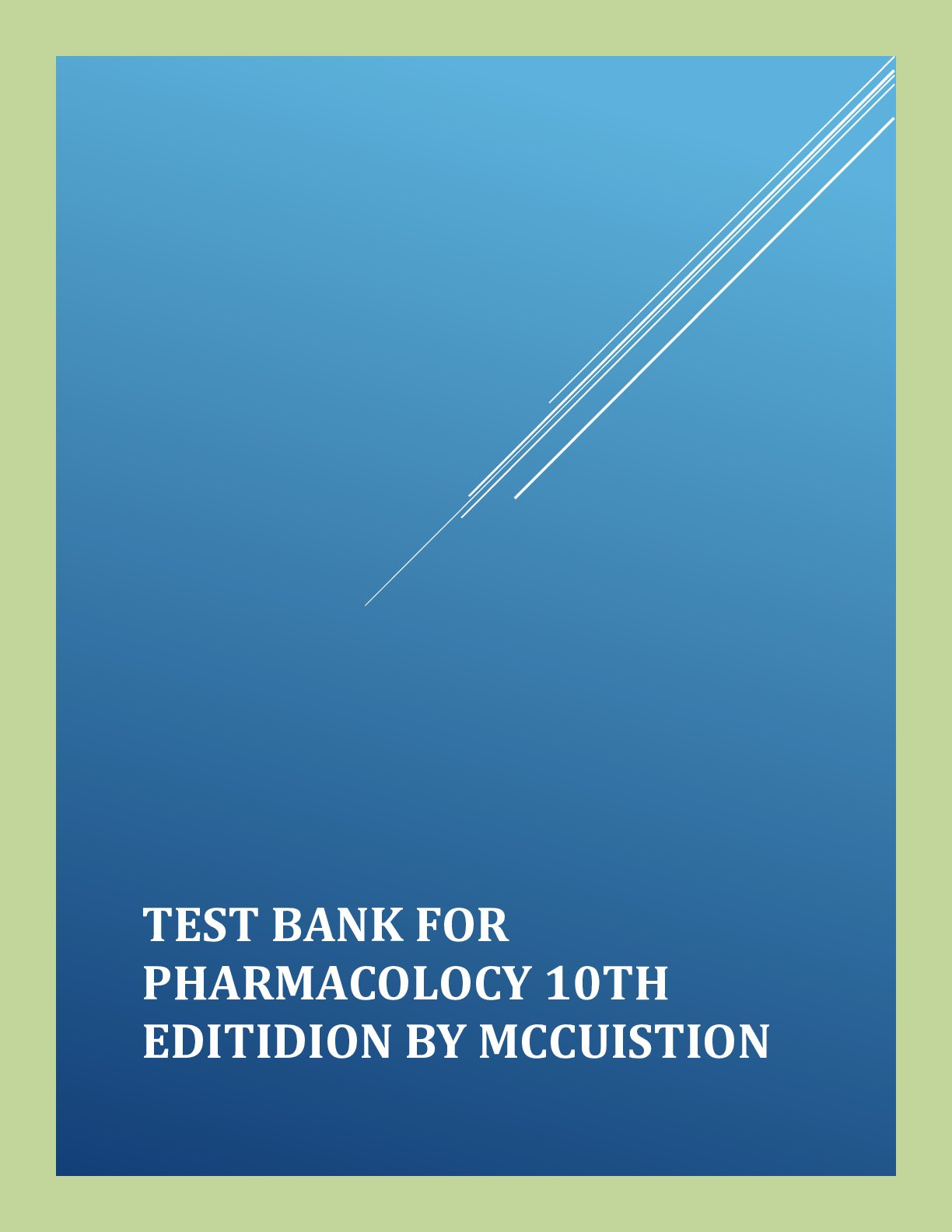


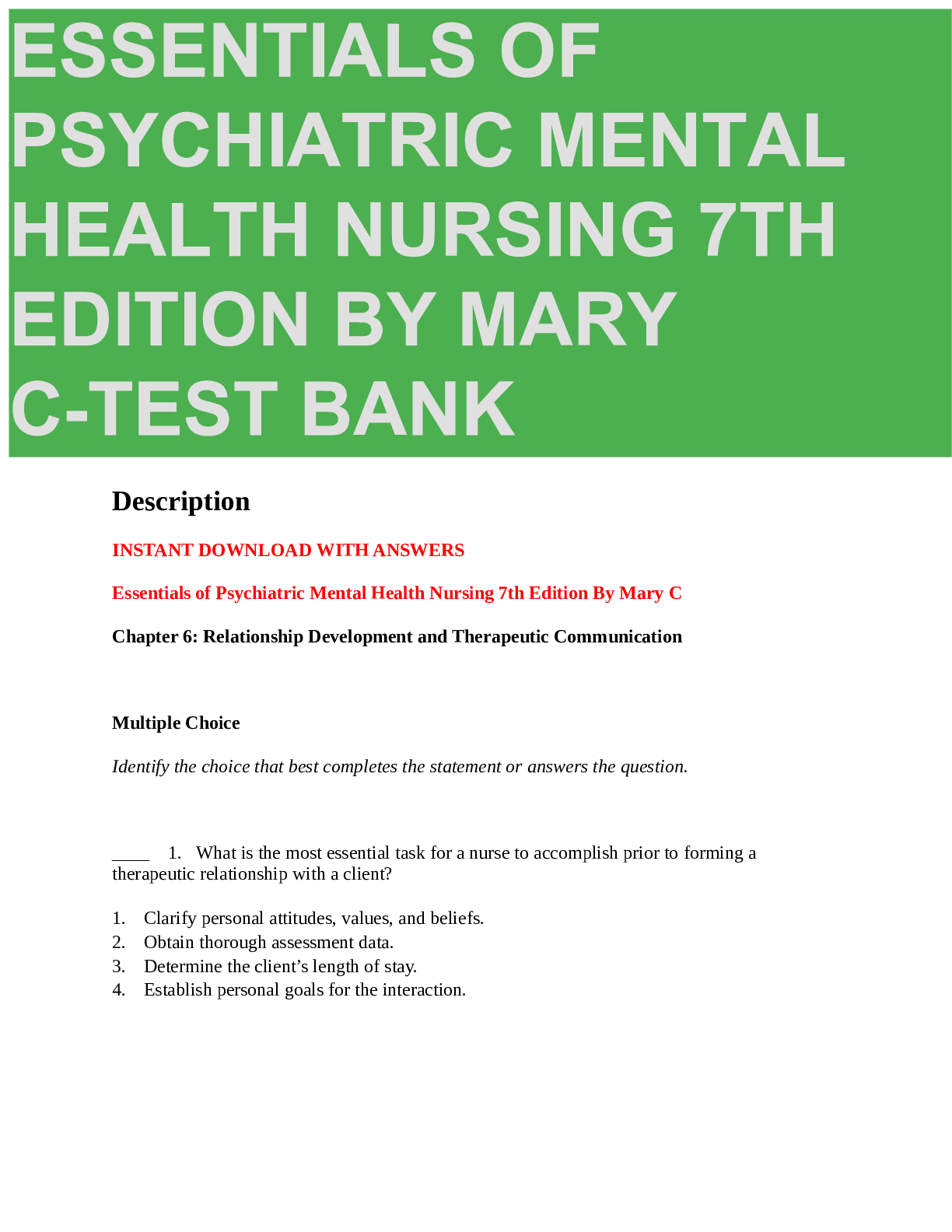

_repaired (1).png)
